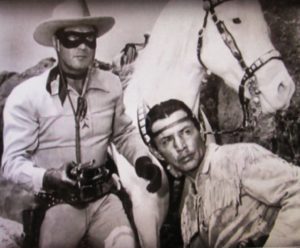
TV cowboys and horses captivated me during my early years. I watched all the Westerns that dominated the Saturday morning airwaves, including The Lone Ranger, The Roy Rogers Show, The Gene Autry Show, Gunsmoke, Sugarfoot, and The Rifleman. Because of them, my balletic endeavors ended after my first recital. Mom tired of the weekly battle to lasso me away from my cowboy friends and their four-legged pardners.

I loved the rhythmic sound of hooves as the horses galloped across the screen. The animals were powerful and had beautiful flowing manes. I wanted one of my own, but we lived in town and my parents said no. One summer afternoon, a man came walking through our neighborhood offering to take pictures of children sitting on his chestnut pony with flaxen mane and tail. I was ecstatic when my parents agreed to it. It was my first time atop one of those beautiful creatures.
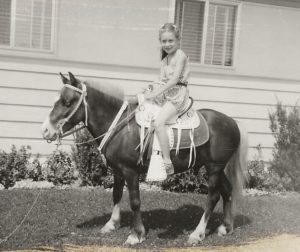
Then on Christmas, I got my wish. It was 8 inches tall and plastic. It came with a removable bridle, reins, saddle, and girth. I never tired of dressing and undressing that horse.
I had a fringed cowgirl skirt, boots, and my own gun belt with a snap pistol. At the county fair, Mom bought me a white straw cowgirl hat with a cinch band. It could be personalized, so she had Bonnie written across the underside of the front brim, easily read when I tilted the hat back. It ranked right up there with my little plastic horse.
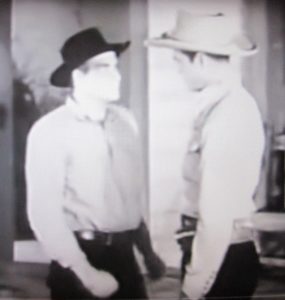
My beloved westerns were black and white, and not just in cinematography. You could usually tell the character of the people by their hats: the good guys wore white ones and the bad guys wore black ones. Film makers used this convention more regularly before 1950, but it continued into the ‘50s and ‘60s during my viewing years. I loved spotting the black hat and knowing who my white-hatted hero needed to watch out for. I guess I have always craved clarity.
Since we no longer walk around in cowboy hats—not in my neighborhood, anyway—I got to pondering on how we can identify the good guys today. The good guys I’m referring to are Christians, people who have a relationship with Jesus Christ. Here’s how I arrived at that designation:
- Jesus is God. Jesus said, “I and the Father are one” (John 10:30).
- Only God is good. Jesus said, “No one is good—except God alone” (Mark 10:18).
- The Greek word for good describes something originating from God and empowered in our lives by Him.
- Since no one is good on their own, being in a relationship with the One in whom goodness originates is the only way a person can be good.
- Therefore, the “good” guys are those who follow Christ and get their goodness from Him.
In Matthew 7, Jesus tells us how we can identify His followers. “16By their fruit you will recognize them. Do people pick grapes from thornbushes, or figs from thistles? 17Likewise every good tree bears good fruit, but a bad tree bears bad fruit. 18A good tree cannot bear bad fruit, and a bad tree cannot bear good fruit . . . 20Thus, by their fruit you will recognize them” (Matthew 7:16-18, 20). And in John 15:8 He says, “This is to my Father’s glory, that you bear much fruit, showing yourselves to be my disciples.”
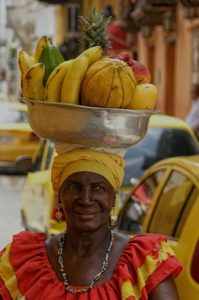
Now, that doesn’t mean we can arrange a few pieces of fruit on our heads and people will walk by and go, “Hey, that’s one of the good guys.” Jesus is talking about fruit of the Spirit, which Paul lists in Galatians 5:22-23: 22the fruit of the Spirit is love, joy, peace, patience, kindness, goodness, faithfulness, 23gentleness and self-control. We can’t acquire this kind of fruit from the outside.
Let’s say an artist creates realistic looking fruit and hangs it on a tree. From a distance, it looks like it grew there. As we get closer, our mouths may water if the artist excels in his craft. However, if we pick off a piece and take a bite, we quickly realize it is fake. Real fruit grows from inside the tree because it is created from the DNA in the plant cells.
Just like the artist, our fruit won’t be authentic if we try to create peace, love, or gentleness. If you’re like me, you’ve attempted that. We won’t be able to sustain those qualities. It is only a façade, and people will see through it when they get to know us. But the fruit of the Spirit is alive and grows from inside us.

For this fruit to grow, we must be connected to the Source of Life. Jesus said, “ 4No branch can bear fruit by itself; it must remain in the vine. Neither can you bear fruit unless you remain in me. 5I am the vine; you are the branches” (John 15:4-5). Remain means to abide or dwell. Unless we live constantly with God, we won’t bear fruit. It needs time to grow. I think of spiritual fruit as God’s character. As we spend time with Jesus, those character traits in Galatians 5 will mature in us.
Others can’t identify us by our physical appearance, such as the jewelry we wear or the clothes we don. Anyone can hang a cross around her neck or plop a white hat on his head. But they will recognize us by our actions. It may not be immediately clear to them like it was in my black and white westerns, but it will become evident as they observe our lives. They will know us by our faithfulness to keep our word, by our patience when things don’t go according to our plans, by our self-control in unjust situations, by our joy in Jesus in the midst of monumental trials. This fruit, nourished by the Vine, will identify the good guys to a watching world.
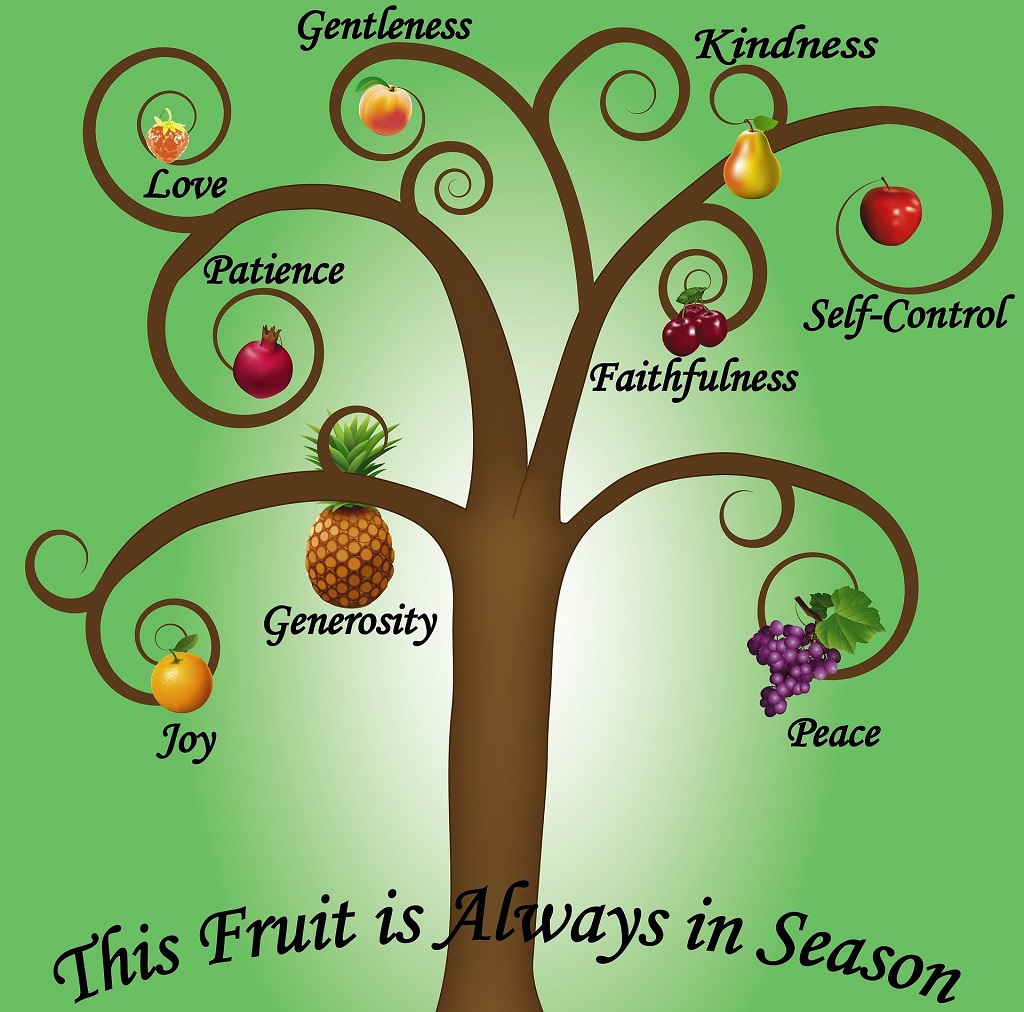

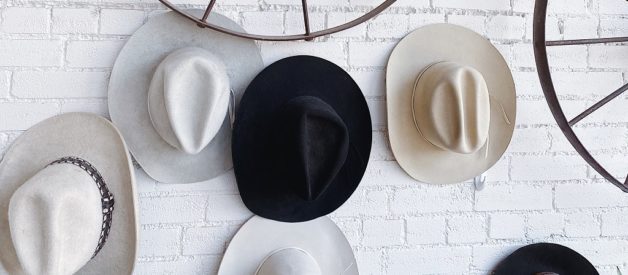


Brenda Murphy
November 29, 2020What an interesting perspective, I’ve never thought about it that way. The good news here is that the “bad” guys have the ability to join the “good” guys! And how true, fake fruit is usually fairly obvious. 🙂
bspencer
November 29, 2020Thank you, Brenda, for pointing out that anyone can be a “good guy.” That’s why Jesus came to earth and died for us–to create a bridge to God so everyone can have that relationship with Him. We just need to walk across that bridge.
Angie Camp
December 4, 2020So true: the spiritual fruit describes the character of God! And I love the picture you included of the brown tree and colorful fruit! Angie
bspencer
December 4, 2020I could hardly believe it when I found that picture among free images. I knew I had to include it.